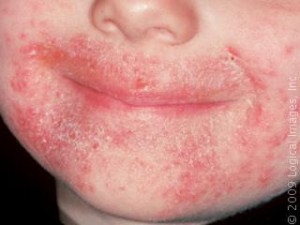Candidiasis: Where is it manifested?
Itching, pain, redness and swelling are the most common symptoms of candidiasis, infection caused by the overgrowth of a microscopic fungus (Candida) normally present in the body and in certain conditions in the external environment. An uncomfortable inconvenience that can be treated by a specific therapy. Knowing the symptoms and, above all, the causes that can cause its appearance will help us to prevent it.
Candida infections usually affect mucous membranes. Infections can be caused by different reasons, including prolonged use of antibiotics, a diet too rich in sugars and even wear too tight clothes. It is advisable that the power is as complete as possible so that there is no lack of defenses and as a preventive measure to prevent fungus growth.
The head of candidiasis is Candida albicans, a small fungus present in the body in limited quantity. It is a part, for example, the vaginal flora of the mouth and, above all, of the intestine. It can also grow outside the body, particularly in humid environments. In certain cases, Candida can grow excessively, causing thrush.
Where is it manifested? The most common is the yeast infection, but not the only. Candidiasis may also appear in the mouth. In some cases it presents as redness and swelling on both sides of the mouth where the skin is red and has small cracks. Other times it appears as white plaques. Thrush in the mouth is often manifested by external contact with the fungus (in the pool, for example).
Thrush can also affect the toes and fingers, causing pain, itching and redness. Infection occurs through contact with infected water or towels. The humidity should be recalled, favors the growth of this fungus, so it is advisable not to exchange the use of towels, bathrobes.
Of the three, as noted, the most common is vaginal candidiasis, caused by contact with the fungus through relationships, intimate apparel infected or migration of the fungus from the gut. In this case, presents with pain, itching and difficulty in intimate relationships.
Causes
The prolonged use of antibiotics can alter the intestinal flora, damaging some of the bacteria and leaving the way clear to the proliferation of candida. Similarly, food also plays an important role as an unbalanced diet may favor its development. The candida fungus thrives on all sugars and fermented substances. Therefore, all the major quantity of these substances comes to the biggest intestine it will be the risk of favoring the development of the candidiasis.
The use of clothing that is too tight, intimate gel too aggressive – may alter the vaginal pH, may also be behind the spread of this fungus. Another reason for development can be constipation, since when the problem continues can facilitate the transmission of candida from the intestine to the vaginal area.
